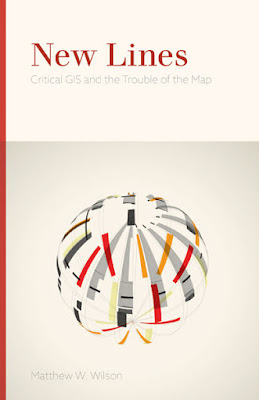Oxford Bibliographies: Neogeography
Last spring, Barney Warf invited me to provide a bibliography on the topic of neogeography for the online Oxford Bibliographies in Geography. I warned that I would be preparing this from the perspective of critical GIS, a kind of disclaimer for inevitable omissions and selective attention. Apparently, I'm encouraged to make edits and additions after publication; interesting idea. See a preprint here.
Wilson, Matthew W. In press. Neogeographies. In Oxford Bibliographies in Geography. Barney Warf, ed. Oxford University Press.
Introduction
The use of the term neogeography serves as a shorthand for a range of technical practices and attitudes that embrace ludic and everyday uses of geospatial technologies, amid their general proliferation. While the origins of the recent use of the term is often attributed to a post on the website Platial by Di-Ann Eisnor in 2006, neogeography has a more extended, if punctuated, provenance. This entry will take up this more recent emergence, to overview the conditions through which neogeography becomes a response to variants of academic and industrial mapmaking. Neogeography, as a more recent attitude or response, operates at a different rhythm than that of academic publication and, as such, an overview of the efforts nominally considered neogeographic requires a broader understanding of the modes of production -- academic and industrial -- as these ideas proliferate. As part of this broadened understanding, this entry places neogeography within a continuity of discussions that gained traction in the mid-1990s, under the umbrella subfield of GIS & Society. This includes specific debates around participation and democracy, privacy and pervasiveness, and commodification and connectivity. Those promoting the idea of neogeography tend to do so in absence of the history of the industries and academic fields that lead to its recent provenance. This overview is meant to establish some foundations for such departures. [ ... ]



Comments
Post a Comment